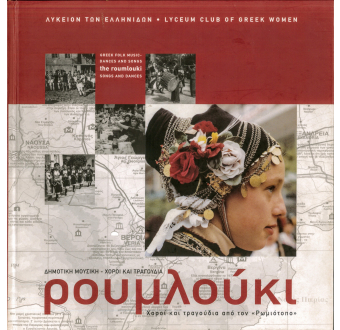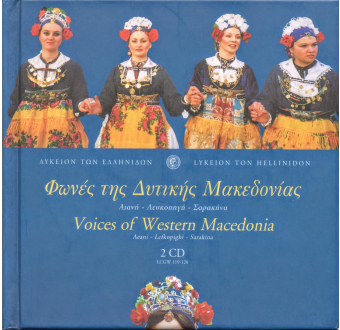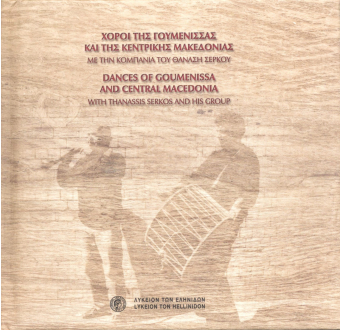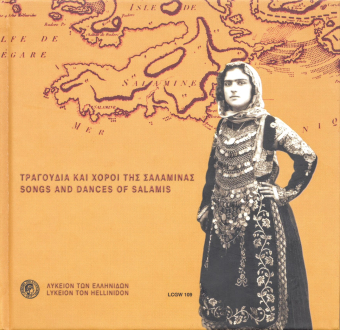
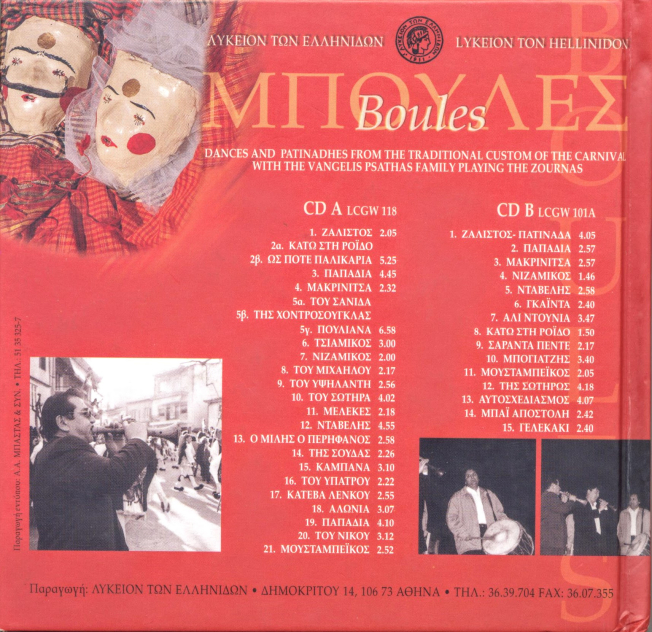
Takis Baitsis
NAOUSSA
A short historical retrospective
The site on which Naoussa stands today has been inhabited since ancient times. The fertile soil and the abundance of water offered favourable conditions for the growth and development of settlements and towns, such as Aegae in Macedonia, Mieza and Kition, which, according to researchers, were situated in the vicinity of present-day Naoussa.
The earliest inhabitants of the region were the Vrygians who, after their emigration to Asia Minor, came to be known as Phrygians, from whom the Macedonians are believed to have borrowed certain cultural elements such as the worship of Orpheus Oeagrus.
During the Byzantine period, the town is believed to have stood on the site known today as Palioniaousta.
Later, in 1361, according to tradition, Ghazi Evrenos, a renegade Greek in the service of the Ottoman Turks, persuaded the inhabitants of Palioniaousta to settle on the site of the present town, which then took the name of Aghostos or Niaousta- Naoussa.
In founding the city Ghazi Evrenos “collaborated” with the Blessed Theophanes, a monk from monastery of Docheiariou on Mt. Athos. Hosios Theophanes, who later became the patron saint of Naoussa, helped strengthen the religious sentiment of the people.
During the Turkish occupation Naoussa enjoyed the protection of the Validé Sultana, the Sultan’s mother, and, until at least the end of the 18th century, life here was peaceful. Its industrious and progressive inhabitants grew maize and cultivated the vine from which they produced the famous Naoussan wine. The saying: “Wine like that of Naoussa should be carried in a handkerchief” is still valid today. At the same time the Naoussans were active as merchants and artisans, the crafts in which they excelled being weaving, gun-making, cutlery, wood-carving and dyeing. It is said that, until 1822, when the town was destroyed by the Turks, there existed approximately forty home industries, the products of which travelled as far as Odessa, Moscow, Vienna, Pest and Leipzig.
The town itself was also embellished at this time. Houses in the so-called Macedonian architectural style were built, as were churches, with fine, elaborately carved wooden iconostases, such as that of Aghios Georgios, and public buildings such as schools that possessed noteworthy collections of manuscripts. This building activity testifies to the city’s economic, social and cultural prosperity.
In this favourable environment which contributed to Naoussas’s being seen as “the free metropolis of the Macedonian Christians on this side of the Axios (Vardar) river”, lived and worked distinguished local scholars, such as Thephanes of Naoussa (middle of the 18th century) and Anastasios Michail (end of the 17th - beginning of the 18th century). Indeed, the latter’s fame was such that he was made a member of the Academy of Berlin.
This situation lasted until about the beginning of the 19th century, when Ali Pasha seized the town and held it for eight years.
Total destruction came a few years later, when the Sultan, angered by the participation of the Naoussans in the Revolution of 1821, literally razed the town to its foundations in 1822.
After that, life gradually resumed its course - slowly at first, but in a more organised way later. Already in 1832 we have the first evidence of churches being built. Until 1875, when the first organised industry appears (the textile factory of G. Kyrtsis, I. Tourpalis and D. Longos), Naoussa goes through a phase of recovery until, by degrees, it once again begins to prosper. The inhabitants are involved in sericulture as well as in the culture of the vine, and, once again, commercial contacts extend beyond the borders of the national territory and reach as far as Egypt and the Danube States. In 1842 the icon painter, Matthaios Ioannou, comes and settles in the town. His son, Christodoulos Matthaios, is the owner of the cylinder mill bearing his name.
The last three decades of the 19th century find Naoussa prepared to play a pioneering role in the field of industry.
At the same time, thanks to its commercial relations and to the personal contacts of its citizens, Naoussa assumes a leading position during the struggle for Macedonian independence, and participates wholeheartedly in all the subsequent national campaigns.
The industry of Naoussa, during the span of time covering the 19th century and up to the period between the two World Wars constituted a major asset, not only on the national level but also on a world-wide scale. Thanks to the contribution of Naoussans but also of individuals from all over the country, this industry was born, grew, achieved great things and reached a peak. After which, alas, it vanished forever. It had been created by wealthy men who, besides putting up the capital, had also contributed their vision and their knowledge, but also by poor people who had dedicated their own selves to their work, regardless of danger, prepared to risk their very lives if necessary. All of these, famous or anonymous toilers of our land, exerting themselves at their particular posts, managed to adorn our small town with all that was best in Europe. All the schools, churches, hospitals, the stadium, and so much else, are the fruit of the industrial development of Naoussa and of the love her children bear her.
In recognition of its participation in the War of Independence in 1821, the State, in 1955, proclaimed Naoussa a “heroic town of Greece”.
From the book by Takis Baitsis: “Naoussa - The Industries of the Past”,
published by the local government of the department of Imathia, Veroia, 1997, pp.17, 21.
Lefteris Drandakis
BOULES
A multisignificant organised spectacle in the town of Naoussa, Macedonia
The Carnival period. Carnival is a revolutionary period in relation to the everyday life of a community. A period in which the common people set themselves to overthrow, upset and satirise all the traditional institutions and values. For a few days, the tongue is allowed unbridled freedom, in areas where, during all the rest of the year, any sexual hint or suggestive allusion is considered highly improper, to say the least. The clergy, too, become the butt of communal satire, as do the ecclesiastical hymns; while the decent and decorous attire ordinarily required of every citizen disappears under a multitude of improvised disguises. Amid the general revolutionary disorder of the customs accompanying these weeks of Carnival, one is amazed to find certain manifestations that impress the spectator by their conventionalised traditional propriety, the disciplined participation of the performers, and their incomparable aesthetic quality, existing at a time when everyone is seeking exactly the opposite.
Such a custom - perhaps the most shining example in all of Greece - is the custom of the Boules, which takes place in Naoussa, Macedonia: Boules, or the Yianitsari and the Boules, is the name usually given to this extraordinarily interesting dance drama. We characterise it thus because the custom is based on the dance and cannot exist without it. The movements of the participants are dance movements, so that the dance is an indispensable part of the ritual.
The basic elements of the custom are: 1. The disciplined formation of the group into a theatrical company, which presupposes the strict adherence to certain rules on the part of the participants; 2. The wearing of the traditionally established disguise, according to the role assumed by each member; 3. A strict compliance with the basic rules governing the celebration of the custom, such as, for instance, the sex of the celebrants (men only), the dance and musical repertory, the musical instruments accompanying the company’s dance, the itinerary followed, etc. and 4. The organised spectacle.
The custom of the Boules is a very ancient one. It is, of course, difficult for us today to discover its original roots, as is the case with most of the Greek customs. All its constituent elements, however - the formation of a company, the actions of the celebrants, the disguises worn, the form of the various dances - refer us to ancient times. Whether or not these pre- Dionysiac rituals aimed at ensuring an auspicious year is perhaps not very important. What is very important, in our opinion, is that the custom modifies and simultaneously incorporates into its various elements the local traditions, the myths, legends and heroic struggles of the local community.
Today, what is handed down to us is a form of celebration of the custom which has also been subjected to the rule of modification and adaptation dictated by modern socio-economic circumstances.
Space does not permit us to analyze extensively the various phases of the custom. We shall only refer indicatively to some of its most characteristic features.
[...]
Lefteris Drandakis
History of the present edition
In the present edition, the second CD contains the recordings as they were presented in the first disk of the Lyceum Club of Greek Women (LCGW 101A) in 1975, in which the daouli was played by Vangelis Psathas’ late lamented brother, Mitsos (Dimitris). At the time of this first recording, in 1969, the vinyl disk did not allow for more than 17 minutes of recorded music. Indeed, the more advanced methods of stereo recording had not as yet been applied at the Sifilms Studio of the late Sifis Siganos - perhaps the finest recording engineer of the time - where the recording was done by Sifis himself. Thus, only the basic dances of the ritual had been recorded. Today, when conditions are different, the extra time afforded by the second CD has permitted us to include a variety of supplementary dances, mainly a number of those played on the second day of the happening, as Vangelis Psathas played them in 1969 (Gaida) and now (1999: Rhoido - Sarandapende - Boyiatzis - Tis Sotiros - Bye Apostoli). The second CD closes with an improvisation by Vangelis Psathas, and with the extremely popular Ghelekaki - a song of the period between the two World Wars - which still continues to be one of the favourite carnival songs of Naoussa.
CD A LCGW 118
1. Zalistos 2.05
2. a. Kato sti Rhoido (patinada) 2.05, b. Os pote palikaria (patinada) 3.20, (5.25)
3. Papadia (dance) 4.45
4. Makrinitsa (dance) 2.32
5. a. Tou Sanida (patinada) 2.50, b. Tis Hondrosouglas (patinada) 1.42, c. Pouliana (patinada) 2.26, (6.58)
6. Tsiamikos (dance) 3.00
7. Nizamikos (dance) 2.00
8. Tou Michailou (patinada) 2.17
9. Tou Ypsilanti (patinada) 2.56
10. Tou Sotira (dance) 4.02
11. Melekés (dance) 2.18
12. Davelis (dance) 4.55
13. O Milis o perifanos (patinada) 2.58
14. Tis Soudas (patinada) 2.26
15. Kambana (patinada) 3.10
16. Tou Ypatrou (patinada) 2.22
17. Kateva Lenko (patinada) 2.55
18. Alonia (patinada) 3.07
19. Papadia (dance) 4.10
20. Tou Nikou (patinada) 3.12
21. Moustabeikos (dance) 2.52
CD B LCGW 101A
Recording 1969 as presented in L.P. LCGW 101A:
1. Zalistos - Patinada 4.05
2. Papadia (dance) 2.57
3. Makrinitsa (dance) 2.57
4. Nizamikos (dance) 1.46
5. Davelis (dance) 2.58
6. Gaida (dance) 2.40
Recording 1999:
7. Ali dounia (patinada) 3.47
8. Kato sti Rhoido (patinada) 1.50
9. Saranda pende (dance) 2.17
10. Boyatzis ('tis tavlas' - table song) 3.40
11. Moustabeikos (dance) 2.05
12. Tis Sotiros ('tis tavlas') 4.18
13. Improvisation 4.07
14. Bye Apostoli (dance) 2.42
15. Ghelekaki 2.40
CD A LCGW 118
Zournas: Vangelis G. Psathas (Naoussa, 1936)
Zournas: Dimitris V. Psathas (Naoussa, 1972)
Daouli: Antonis V. Psathas (Naoussa, 1960)
CD Β LCGW 101A
1. Νο. 1,2,3,4,5,6
Zournas: Vangelis G. Psathas (Naoussa, 1936)
Daouli: Dimitris V. Psathas (Naoussa, 1931-1975)
2. Νο. 7,8,9,10,11,12,13,14,15
Zournas: Vangelis G. Psathas
Zournas: Dimitris V. Psathas
Daouli: Antonis V. Psathas
Recording:
1. September 1969, Athens, Sifilms Studio
Recorded by: Sifis Siganos
2. February 1999, Athens, I. Sygletos Studio
Recorded by: I. Sygletos




